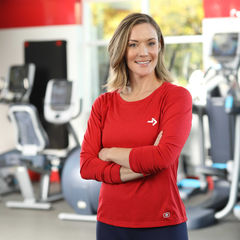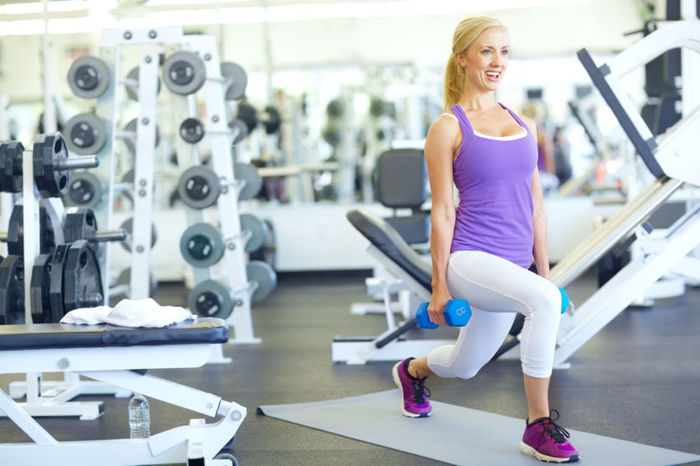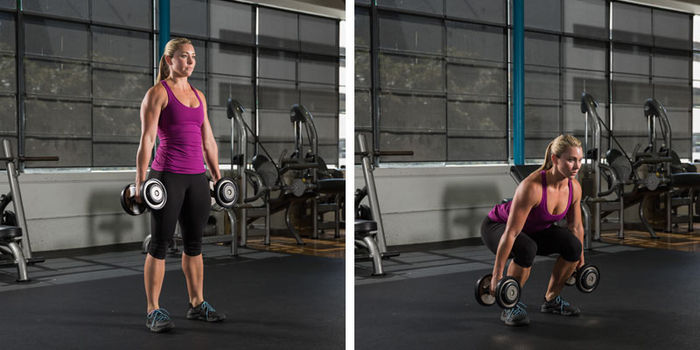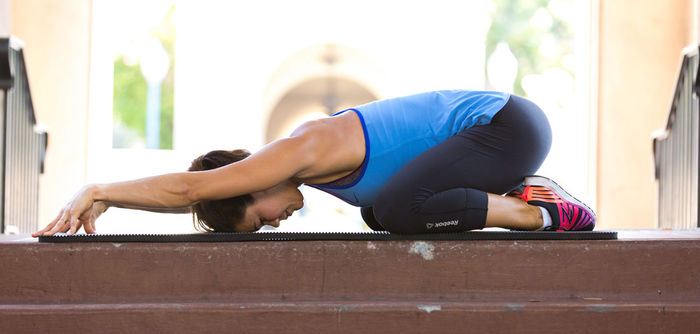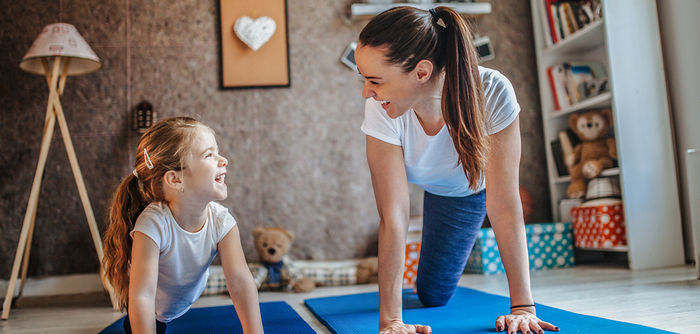“I don’t have time to cool-down” or “I’ll stretch later.” These common phrases are like nails on a chalk board to personal trainers and group fitness instructors around the country, yet are heard on a regular basis. With the perception of time being the most important determinant for an individual to remain diligent in their exercise routine, the cool-down is usually the first thing to go when time is of the essence. Although it may be easy to simply jump from the treadmill straight into the shower, or from the squat rack to the car, there are five very important reasons to think carefully before you pull the plug on your workout.
1. Blood Pooling
During exercise, the heart is pumping at an accelerated rate and the oxygenated blood has to be pumped from your heart and make it all the way through your lower extremities before working its way back to the heart (against gravity) to be re-oxygenated again. When the body goes from moving quickly or performing a lot of work during your last set to working less and moving slowly, the squeezing action provided by the working muscles is greatly diminished. When exercise is stopped abruptly, this can cause the blood to pool in the lower extremities and slow its return back to the heart and, subsequently, the brain. Another factor that adds to this dilemma is the one-way valves that are present within our vascular system. Veins, which are generally responsible for returning deoxygenated blood back to the heart and lungs, come equipped with one-way valves spaced throughout to prevent back flow. When the movement of blood slows within the vascular system, there is less pressure available to move the blood through these doorways, which causes the blood to become somewhat ‘trapped’ between these valves. All of this can lead to lightheadedness, dizziness and fainting. In fact, many fitness facility accidents occur in the locker rooms because of this blood pooling effect (especially with the elderly or those prone to cardiovascular issues). So, when you feel like jumping from your last sprint straight back into your street clothes, remember to take an extra few minutes to slow your roll, make sure your heart rate comes down slowly, and allow your body to become accustomed to the now diminished level of work. It might save you a trip to the emergency room.
2. Delayed Onset Muscle Soreness (DOMS)
DOMS occurs 24 to 48 hours after exercise due to microtears in the muscle fibers. This is a normal part of exercise and some soreness is to be expected, especially with resistance training or a new form of exercise. However, considerable amounts of DOMS is not comfortable and can be rather debilitating when trying to stay on a consistent exercise schedule. DOMS that hangs around for more than two to three days may also be a sign of overtraining or illness, or be a precursor to injury. Cooling down after your workout is a great way to help minimize the DOMS effect. A recent study conducted at California State University looked at the effect of recovery interventions of moderate- and low-intensity cycling, as well as seated rest after strength training. What they found was that when completed after the strength training bout, the moderate-intensity cycling cool-down showed a significant decrease in DOMS due to increased blood flow to the exercised muscles. So when your last reps are in the books, don’t forget to put your weights away and take a short spin on the closest bike; your quads will thank you in 24 to 48 hours.
3. Stress Relief
Exercise is a great way to step away from the day’s stresses and take care of yourself. Not only are you taking care of your body when you exercise, but you’re also taking care of your mind by helping to release the “feel good” hormones dopamine and serotonin, also known as endorphins. The cool-down is an important part of this process—when exercise is slowed and the body is allowed to gradually come back to a resting, balanced state (homeostasis), you will be able to take full advantage of the relaxed and euphoric effect that these neurochemicals have on your body. Taking a few moments to stretch, breath and reflect on your awesome workout will not only help you be on point when you enter back into your busy life, it will also leave you feeling refreshed and possibly ward off future diseases.
4. Injury Prevention
When you are finished with all your sets and reps or your final interval, your muscles are very warm and pliable (think of silly putty that you’ve been played with for a while), making static stretching a great addition to the cool-down to improve overall flexibility. When the muscles are stretched on a consistent basis, they become lengthened and, over time, will allow you to have more range of motion, warding off injuries that tend to plague the inflexible. This is also true for those who may not be of the competitive nature. Lower-back injuries are among the most common reasons for days missed at work and can be caused from tight hamstrings and/or tight hip flexors, which is why it is so important to give these areas some love after your workout. Two sets of 30-second static stretches will not only make your legs and back feel great, but you will also be more likely to catch yourself in a slippery situation and prevent a future injury.
5. Recovery
After an intense bout of exercise there is accumulation of lactic acid within the system. It takes time for this byproduct of exercise to be ‘buffered’ out, so 10 minutes of light exercise along with stretching is a great way to begin clearing the lactic acid from the body. It also helps to ensure that your body will be ready for its next physical test.
With all this talk about a cool-down it is important to know what to include during this essential part of your workout routine. A cool-down should fill the last five to 15 minutes of your workout, and include static (held for 30 seconds or so) stretches of the muscle groups you just worked. For example, if you did squats and push-ups, you’ll want to stretch your glutes, quads, chest and triceps. You should also include a light form of cardiovascular exercise. If you just finished a spin class or a run, try walking for five to 10 minutes and then do your stretches. Your cool-down might also include the use of a foam roller to help alleviate those tender points along the muscles. So, while it might be just as easy to skip out early, remember that a 10-minute cool-down can be the difference between you and your fitness goals.
 by
by 

